1 Chalkboard
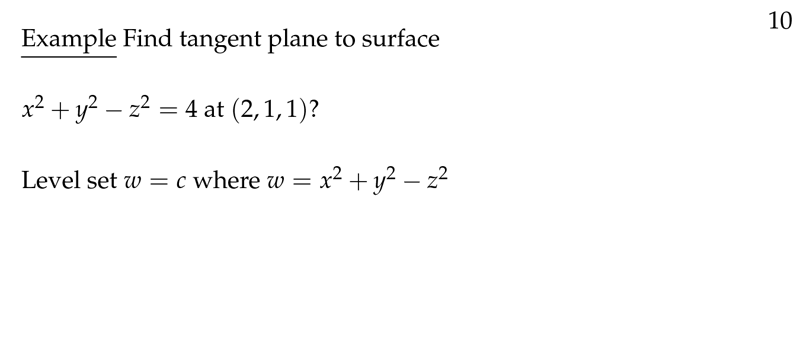
Figure 1: Find tangent plane to surface
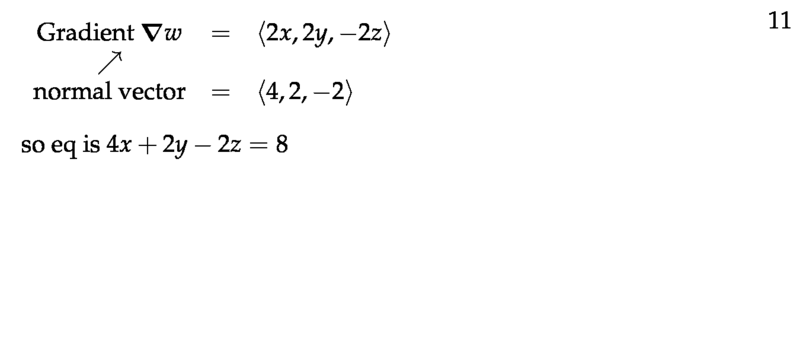
Figure 2: Gradient is the normal vector of tangent plane
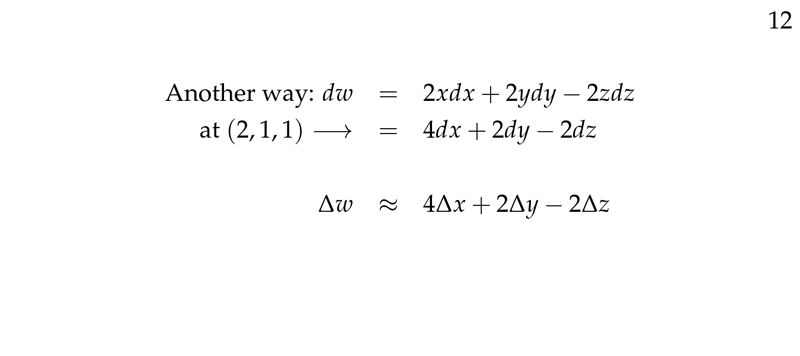
Figure 3: Another way throught linear approximation
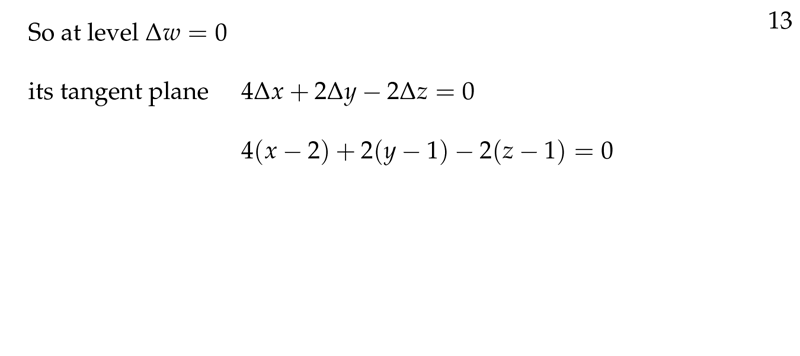
Figure 4: Meaning of approximation
2 How can we proof that gradient is perpendicular to level curves and surfaces?
2.1 Front
How can we proof that gradient is perpendicular to level curves and surfaces?
\(w = f(x,y,z)\), point \(P=(x_0, y_0, z_0)\) and level surface \(f(x,y,z) = c\)
2.2 Back
- Gradient: \(\grad{f}|_P\)
- It means it is perpendicular to the tangent of any curve that lies on the surface and goes through \(P\)
- Let \(\vb{r}(t) = \ev{x(t), y(t), z(t)}\) a curve on the level surface, where \(\vb{r}(t_0)=\ev{x_0, y_0, z_0}\)
- \(w = f(x(t), y(t), z(t))\)
- Level surface: \(g(t) = f(x(t), y(t), z(t)) = c\)
- Differentiating:
- \({\displaystyle \dv{g}{t} = \pdv{f}{x}\bigg|_P \dv{x}{t}\bigg|_{t_0} + \pdv{f}{y} \bigg|_P \dv{y}{t}\bigg|_{t_0} + \pdv{f}{z}\bigg|_P \dv{z}{t}_{t_0} = 0}\)
- \({\displaystyle \dv{g}{t} = \ev{\pdv{f}{x}\bigg|_P, \pdv{f}{y}\bigg|_P, \pdv{f}{z}\bigg|_P} \vdot \ev{\dv{x}{t}\bigg|_{t_0}, \dv{y}{t}\bigg|_{t_0}, \dv{z}{t}\bigg|_{t_0}} = 0}\)
- \({\displaystyle \grad{f}\bigg|_P \vdot \vb{r’}(t_0) = 0}\)
Since, dot product is 0, we have shown that the gradient is perpendicular to the tangent to any curve that lies on the level surface
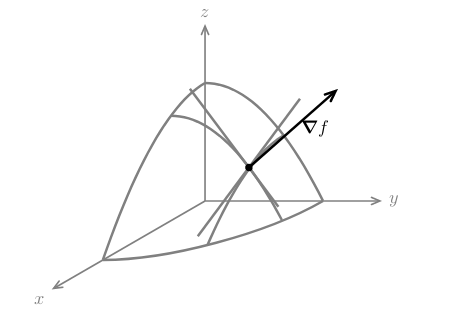
3 Which is the implicit form of 2D function \(w = f(x,y)\) level curve?
3.1 Front
Which is the implicit form of 2D function $w = f(x,y)$ level curve?
3.2 Back
- Level curve: \(f(x,y) = c\)
- Relation between \(x\) and \(y\) which means \(y\) can be thought of as a function of \(x\)
- \(y = y(x)\)
- Level curve: \(f(x, y(x)) = c\)
4 Tangent plane of the graph using gradients and level surfaces
4.1 Front
Tangent plane of the graph using gradients and level surfaces
Graph: \(z = f(x,y)\) Point: \(P = (x_0, y_0, z_0)\)
4.2 Back
- New variable: \(w = f(x,y) - z = 0\)
- The graph \(z = f(x,y)\) is just the level surface \(w=0\)
- \(\grad{w} = \ev{f_x, f_y, -1}\)
- At point \(P\) the normal is \(\ev{f_x(x_0,y_0), f_y(x_0, y_0), -1}\)
- Compute the equation of tangent plane
- \(f_x(x_0, y_0)(x-x_0) + f_y(x_0, y_0)(y - y_0) - (z - z_0)\)
- \((z - z_0) = \pdv{f}{x}\bigg|_0 (x - x_0) + \pdv{f}{y}\bigg|_0 (y - y_0)\)
This is the tangent plane to a graph